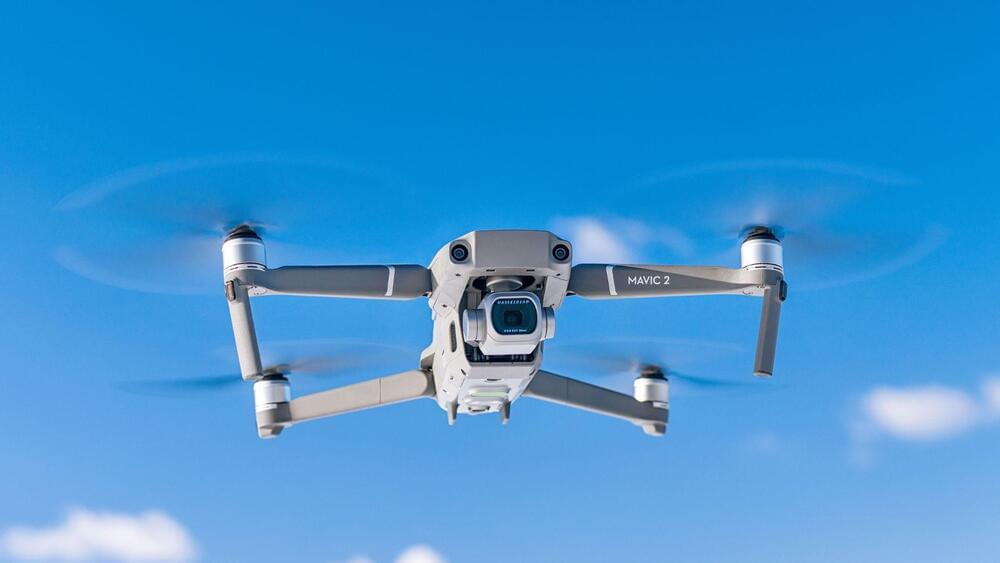Eshma/iStock.
DJI is one of the 13 companies put on the Pentagon’s blacklist on Wednesday, reported Al Jazeera.


The hackers have not yet been identified.
Binance, the world’s largest cryptocurrency exchange, was hacked, and around $100 million of Binance Coins (BNB) were stolen, the CEO of Binance, Changpeng “CZ” Zhao, tweeted Friday morning.
The CEO of Binance, Changpeng “CZ” Zhao, took to Twitter on Friday morning to announce that his platform had been hacked and that $100 million in Binance Coins had been stolen. The hackers have yet to be identified.

Musk hasn’t specified how many trucks, the company can roll out.
The long wait for Tesla’s Semi Trucks may have finally come to an end after CEO Elon Musk tweeted that the company would begin deliveries to Pepsi Co starting December this year.
Tesla and its investors must be hopeful that the Semi Truck will herald a new age in electric trucking just as the company’s sedans did for the passenger vehicle segment. Owning a Tesla has been a matter of pride for many who took the plunge into electric vehicles way before governments could even think of electric vehicle sale mandates.
Since its unveiling in 2017, Tesla has been calling the Semi the future of trucking and has promised a whole new electrically powered beast. Here’s what Semi owners can expect with this fully electric truck.

Amazon has announced that it will purchase 20 electric semi-trucks from Volvo Trucks to be used in its German delivery network.
Volvo Trucks has been producing electric semis since 2019, and they are continuing to expand their sales by now selling 20 electric semi-trucks to Amazon for use in Germany. The Volvo FH electric semis will be used by Amazon to complete large domestic deliveries and are expected to travel over 1 million kilometers annually.
Amazon has high expectations for its new fleet of electric-semis. Each Volvo will be expected to travel 500 kilometers daily, nearly double the Volvo FH’s 300-kilometer range. Furthermore, they will replace diesel tracks and be expected to perform well in the same role. Spokesmen from Amazon and Volvo are optimistic and see the new fleet as critical to Amazon’s efforts to decarbonize their transport system.

While CommonSpirit declined to share specifics, a person familiar with its remediation efforts confirmed to NBC News that it had sustained a ransomware attack.
CommonSpirit, which has more than 140 hospitals in the U.S., also declined to share information on how many of its facilities were experiencing delays. Multiple hospitals, however, including CHI Memorial Hospital in Tennessee, some St. Luke’s hospitals in Texas, and Virginia Mason Franciscan Health in Seattle all have announced they were affected.

On Saturday evening (Oct. 8), should local weather conditions permit, you’ll be able to enjoy a view of a waxing gibbous moon hovering near to the “king of the planets,” Jupiter.
Both will be posed about one-quarter up in the east-southeast part of the sky as darkness begins to fall. The moon, which will be less than 24 hours from full phase — 99-percent illuminated by the sun — will be situated just below and to the left of Jupiter, a distance measuring roughly 4 degrees.

Rideshare provider Uber has signed a 10-year, multi-market commercial agreement with Motional – a developer of driverless robotaxis. As part of the agreement, Uber will deploy Motional’s IONIQ 5 electric robotaxis in select markets at first, with the potential to reach millions of customers by providing both ride-hailing and delivery services autonomously.
Motional is an autonomous driving technology developer that exists as a joint venture between Hyundai Motor Group and Aptiv – specialists in advanced safety, electrification, and vehicle connectivity. It is headquartered in Boston with more recent offices in Santa Monica, California, where the company has been testing its driverless robotaxis built upon Hyundai IONIQ 5 EVs.
In 2021, the public got the first glimpse of Motional’s IONIQ 5 robotaxis, which have completed a fully-autonomous cross-country drive in the US, in addition to 100,000 public rides. Prior to today’s news, Motional has already had a working relationship with Uber Technologies ($UBER) that has consisted of autonomous food deliveries in the Los Angeles area.

Glia, a non-excitable cell type once considered merely as the connective tissue between neurons, is nowadays acknowledged for its essential contribution to multiple physiological processes including learning, memory formation, excitability, synaptic plasticity, ion homeostasis, and energy metabolism. Moreover, as glia are key players in the brain immune system and provide structural and nutritional support for neurons, they are intimately involved in multiple neurological disorders. Recent advances have demonstrated that glial cells, specifically microglia and astroglia, are involved in several neurodegenerative diseases including Amyotrophic lateral sclerosis (ALS), Epilepsy, Parkinson’s disease (PD), Alzheimer’s disease (AD), and frontotemporal dementia (FTD). While there is compelling evidence for glial modulation of synaptic formation and regulation that affect neuronal signal processing and activity, in this manuscript we will review recent findings on neuronal activity that affect glial function, specifically during neurodegenerative disorders. We will discuss the nature of each glial malfunction, its specificity to each disorder, overall contribution to the disease progression and assess its potential as a future therapeutic target.
Glia are non-neuronal cells of the nervous system which do not generate electrical impulses yet communicate via other means such as calcium signals. Due to their lack of electrical activity, it was previously assumed that glial cells primarily functioned as “nerve-glue” (Virchow, 1860) and performed house-keeping functions for neurons; however, this concept has shifted due to recent findings showing glia are key components in many neuronal functions that go far beyond housekeeping (Araque et al., 1999; Buskila et al., 2019a).
Glial cells are categorized into two main groups; macroglia, which includes astrocytes, oligodendrocytes, NG2-glia and ependymal cells, and microglia which are the resident phagocytes of the central nervous system (CNS). Each population of glial cells is specialized for a particular function in the central or peripheral nervous system (García-Cabezas et al., 2016), and normal brain function depends on the interplay between neurons and the various types of glial cells. In this review, we will focus on astrocytes and microglia.

